Everything to Know About Installing Composite Decking
By Editorial Team
Updated on July 20, 2024
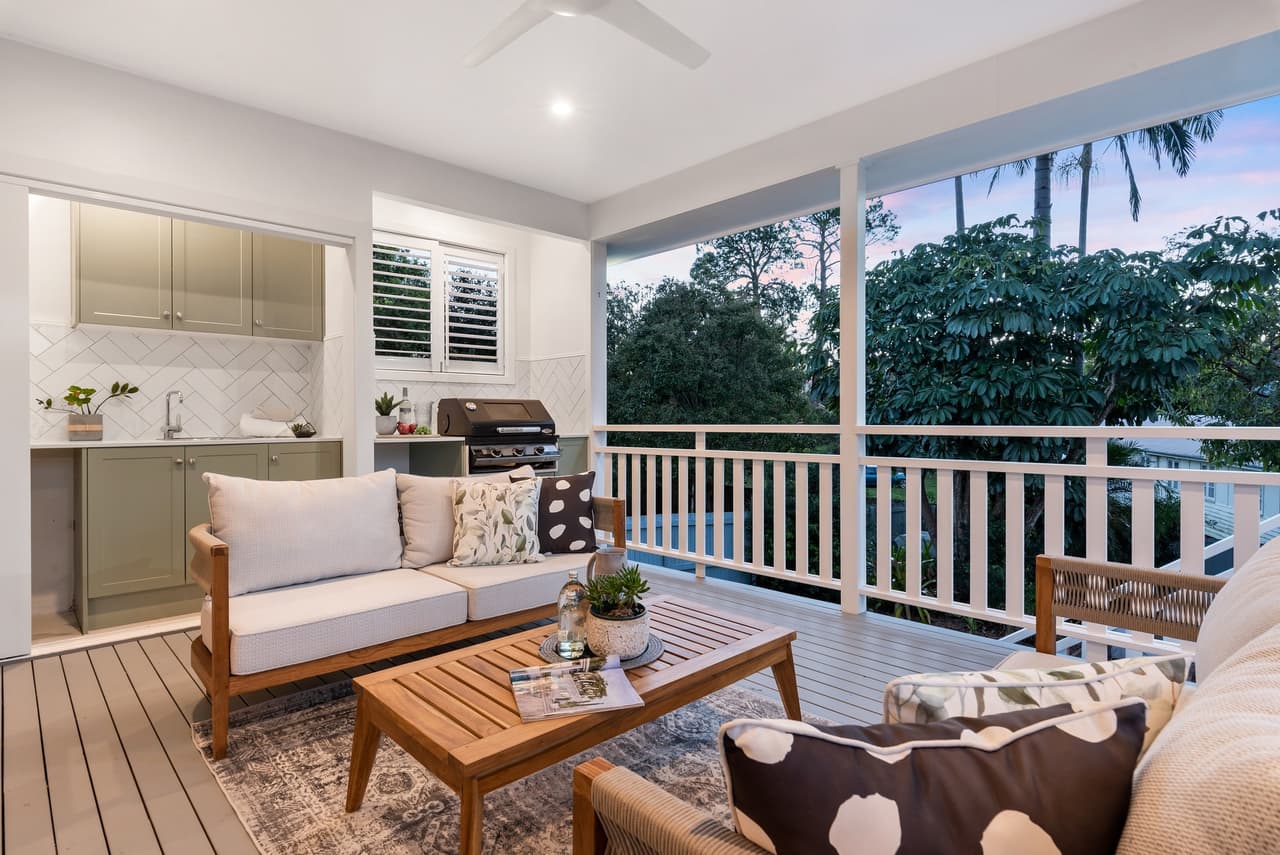
Composite wood is a great material to consider for building an outdoor structure. It’s a fair alternative to natural wood given its optimized composition designed to withstand the ever-changing weather conditions.
Let’s take an in-depth look at this material, its price point, and its installation and maintenance techniques for optimal care.
What Is Composite Wood?

True to its name, composite wood is a material stemming from an amalgamation of different components:
Wood fibres
Recycled plastic
Artificial polymers
All particles used in its making are combined using adhesive products. When used as decking, the boards are very similar to that of genuine wood planks. The finish is often a little more uniform, but the warmth and coziness of natural wood remain.
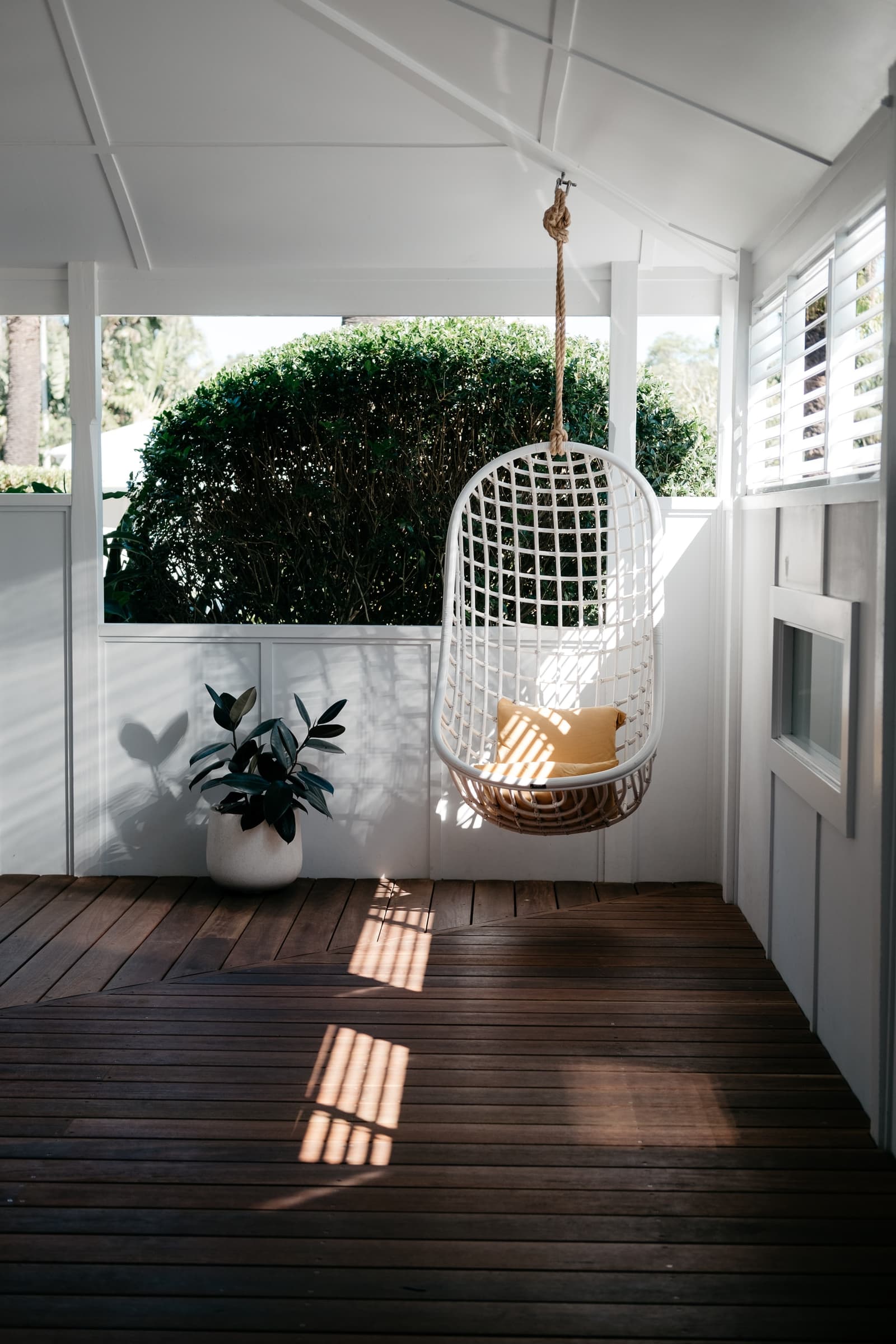
What Are the Pros and Cons of Composite Decking?
Retailed since the 1980s, composite wood has definitely proven its worth over the years. So much so that it’s now commonly used across North America. It’s often used as decking, whether that be for a balcony, closed-in porch, veranda, or any other outdoor patio-like surface.
Here’s a list of its advantages:
Humidity-resistant
Waterproof (prevents fungi growth and is rot-proof)
Long service life
Non-slip surface (ideal for tiling around a pool or hot tub)
Decking won’t be scorching after long sun exposure
Retailed in a wide array of shades and finishes
Yet, there are also a few drawbacks linked to this sort of product:
Steep upfront costs: While it’s not the most expensive decking material, it’s certainly not the most affordable product either. It’s a long-term investment.
Its weight: Composite decking is rather heavy, which makes it harder to lug around.
The look of composite decking can’t be altered with paint or stain, as neither product adheres to its surface given the plastic found in its composition.
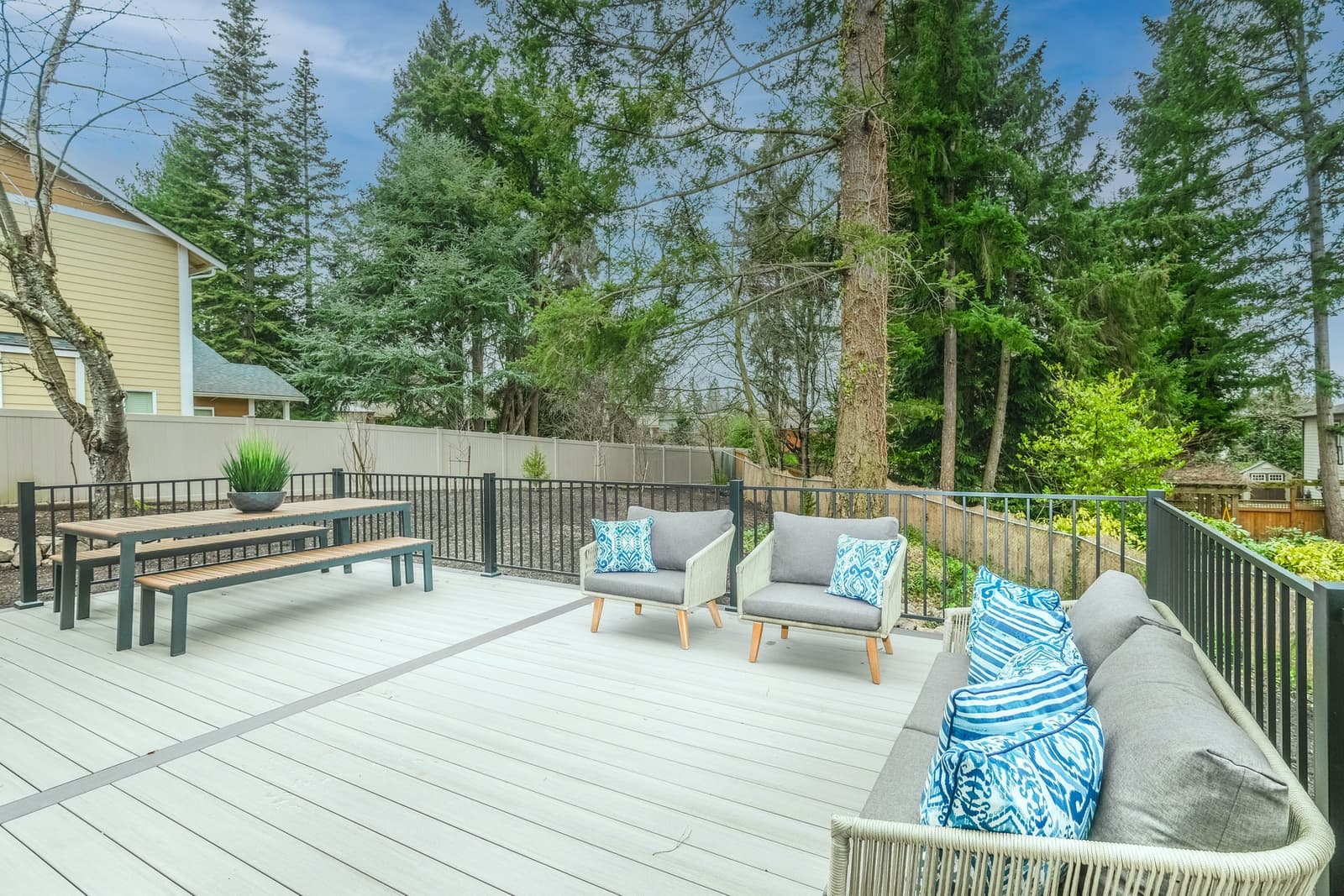
How Much Does It Cost to Build a Composite Deck?
Costs vary between $6.50–$9.50/square foot for materials; and $60–$85/square foot for installation. On average, to build a 150-square-foot deck, paying roughly $8,250 isn’t too out of the ordinary.
However, said amount may waver based on the time of year during which you’re planning on carrying out your project, labour costs in your area, as well as several other factors that render presenting a concrete price more difficult.
If you want to learn more about budgetary matters, feel free to try out of cost estimator for your decking project.
You can also check out our article comparing different decking material costs:
As you’ll come to find out, composite wood isn’t the most expensive material, nor the most cost-effective choice on the market. It’s a decent option for all homeowners with mid- to high-range project budgets looking to get their money’s worth.
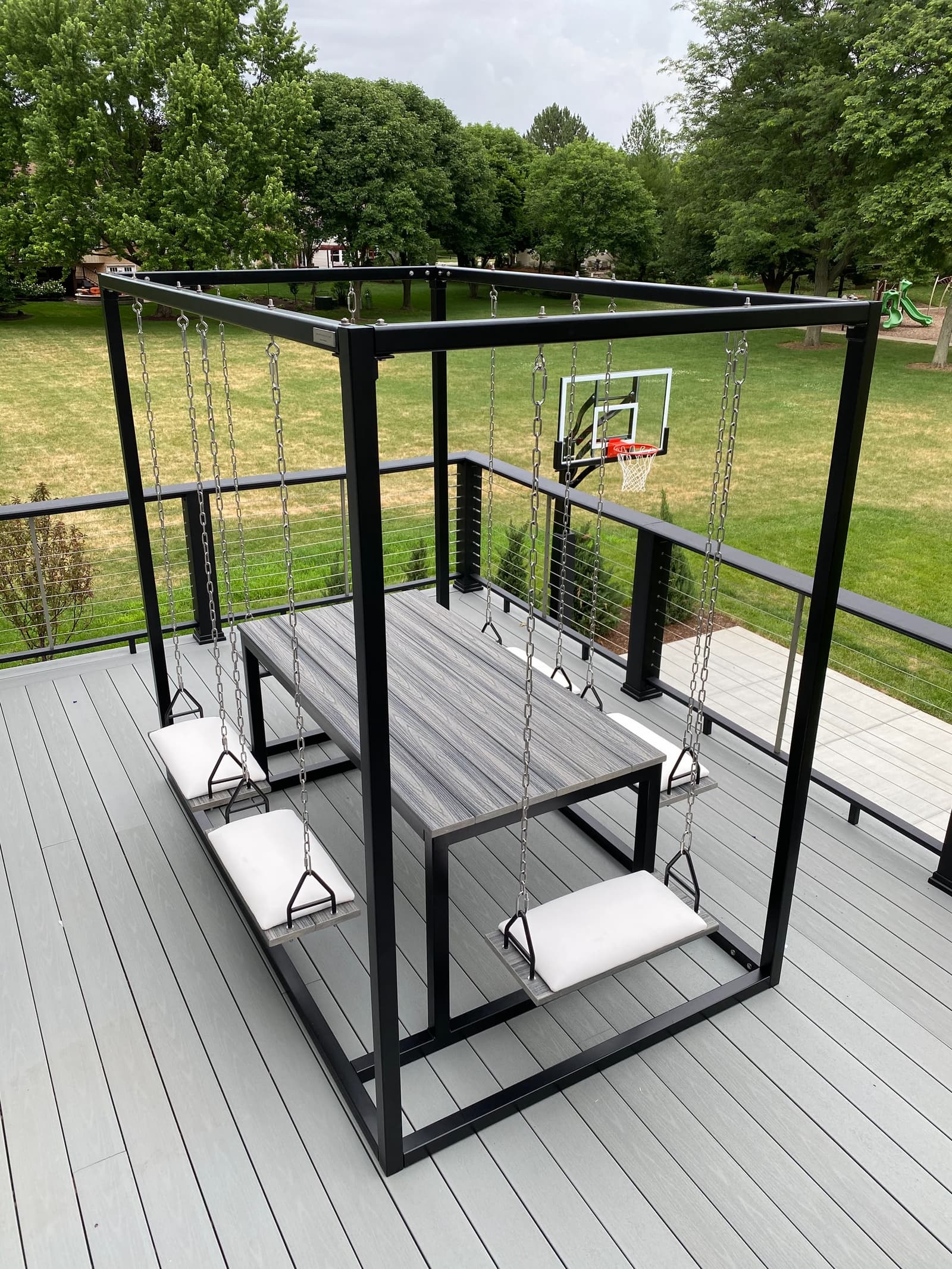
How to Build a Composite Deck: Guidelines
Note that the best possible course of action is to commission your deck building and installation project with expert deck installation services. Nevertheless, you should still familiarize yourself with the different project-specific steps:
Obtain building permit with municipal authorities
Purchase materials
Build the deck’s foundation
Install posts
Attach beams
Add structural supports
Build the deck’s frame
Add joists
Install decking boards
Add stairs (if planned for)
Install railing
The list above is a brief rundown of all installation guidelines for a composite deck. Your hired contractor will be familiar with all material peculiarities and the different steps involved in installing the structure properly.
Additionally, note that this sort of deck needs adequate ventilation. The structure has to be installed at least 12 inches off the ground. The gap can be concealed using lattices or another material that allows for good airflow.
What Type of Contractor Should I Hire for My Project?
Once you’ve landed on this sort of decking for your deck-building project, your next step will be finding the right contractor for the job.
In Quebec, if your deck is attached to your house, the hired contractor needs to hold a valid RBQ-issued licence. Note that a contractor holding a general licence can also legally carry out such work and sign the related paperwork.
However, if you’re hoping to have a freestanding deck, hiring a licensed contractor isn’t mandatory.
Note that all RenoQuotes.com affiliated contractors have verified licences.
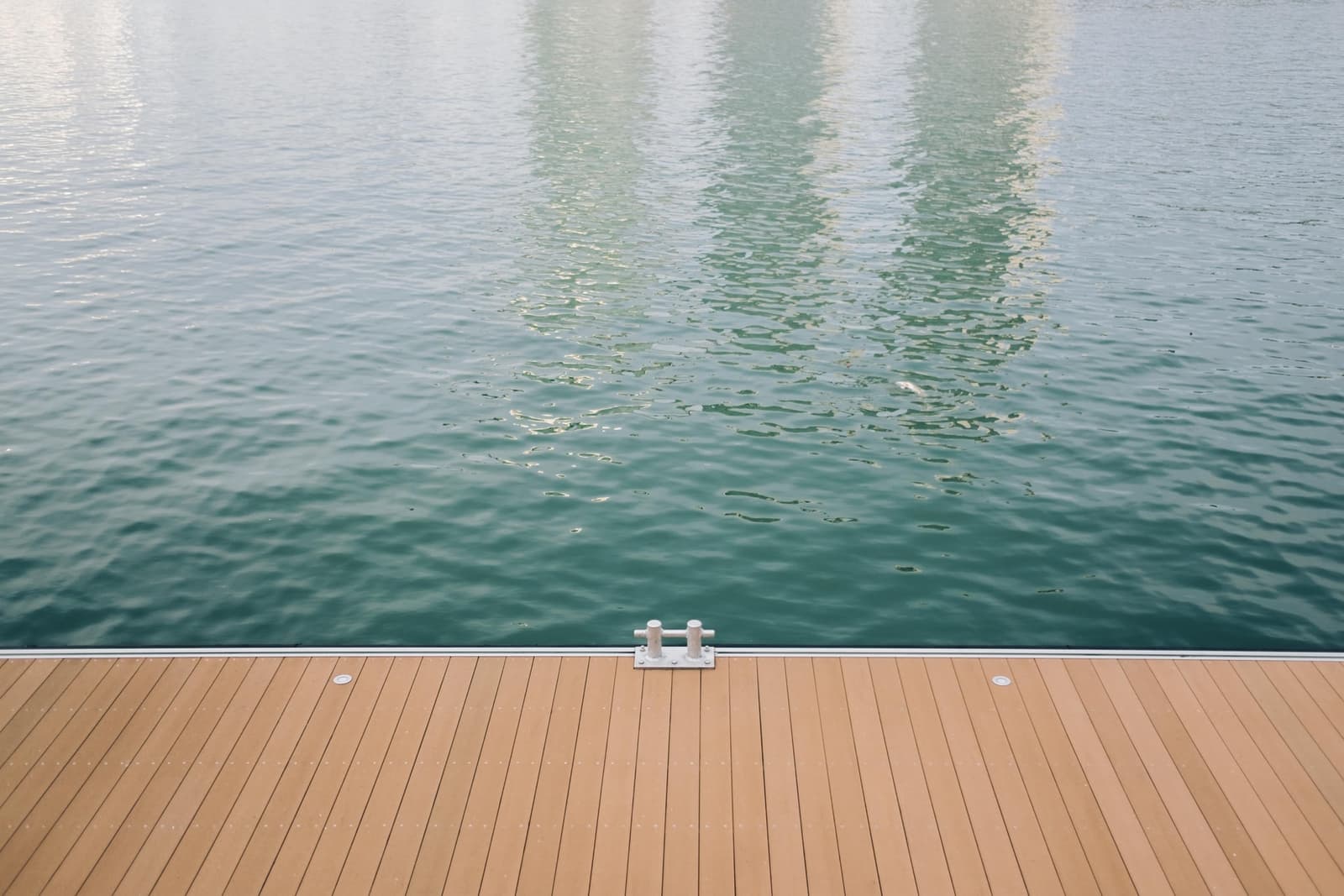
What Is There to Know About Regular and Yearly Deck Maintenance
As mentioned, one of the upsides to composite decking is its low maintenance. Its surface is waterproof and easy to clean. Throughout the summer, simply use a soft-bristled brush, a rag, and a bit of gentle soap to remove most stains.
In terms of yearly maintenance, you can choose to apply a mould guard over the surface. However, prior to purchasing a product and using it, ask your deck manufacturer whether the product in question works on composite decking.
During the winter, there are no real protective measures for your composite deck. The main guideline by which you should abide is carefully shovelling the snow off the surface to avoid scuffing the decking.
Carefully pore over the manufacturer’s product guidelines as some decking is suited to de-icers, while others are not.
What Other Materials Can You Use to Build a Deck?
Want to discover other deck-building materials worth your consideration prior to choosing one? Here are just a few:
Treated wood
Cedar
Torrified wood
Ipe
Get 3 quotes for your deck or patio building project
RenoQuotes.com can help you get quotes for your deck and balcony project. When you submit your project, we’ll connect you with top-rated contractors. Fill in the form on the homepage (it only takes a few minutes) and receive estimates from trusted professionals.
Dial 1-844 828-1588 to speak with one of our customer service representatives.
Looking for something else?
Related articles
The latest industry news, interviews, technologies, and resources.

Editorial Team
•03 Nov 2025
Among the many renovation projects out there, painting projects are most accessible to apprentices in the industry. Indeed, painting is part of our daily lives and few are those who can ever say they've never been called to lend a hand to change the appearance of one or more rooms inside a home.

Editorial Team
•07 Nov 2023
A renovation project without delays is like thunder without lightning; when one occurs, the other follows. Yes, the truth of the matter is that almost every single renovation project will experience a small or large bump in the road.

Léa Plourde-Archer
•07 Nov 2023
With the new year starting and the wind of renewal that is blowing in, paint companies are currently announcing their colour of the year. These companies are offering eclectic and creative palettes, which perfectly follow the trends of the coming year.

Amanda Harvey
•07 Nov 2023
A few years ago, the idea of using barn doors inside the home may have seemed ludicrous. Now, sliding barn doors have become a popular trend in the world of interior design, adding rustic charm, warmth and depth to even the most modern spaces.
Editorial Team
•05 Sep 2024
Cracked grout, recessed joints, and loose tiles are some of the telltale signs of a leak, but when grout joints darken as a result of mould, and the tiles sink to the touch, it’s about time to act.